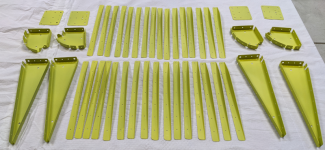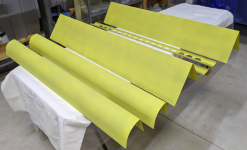Hello,
A couple of Akzo questions I was hoping for some assistance with:
TIA
A couple of Akzo questions I was hoping for some assistance with:
- What is the difference between the various versions of Akzo primers? In reading the Akzo website a number of them seem to be quite similar but I have to imagine there is a material difference. E.g., Aircraft Spruce only sells 463-12-8 / CA-116. SkyGeek also sells the same for $114 less than Spruce; but SkyGeek also carries 10P4-2NF / EC-117S for even cheaper than that ($210).
- Any suggestions on how to source it, possibly locally? I checked the Akzo suppliers page, there don't appear to be any listed in Illinois. I'm currently leaning towards the 463-12-8 / CA-116 listed on SkyGeek for $399.
- Is HVLP spray gun the best way to go? I do not have an air compressor rated for the proper CFM but as others have suggested I think I can get away with interior priming by doing short bursts. Or would LVLP / conventional spray gun work for Akzo?
TIA






